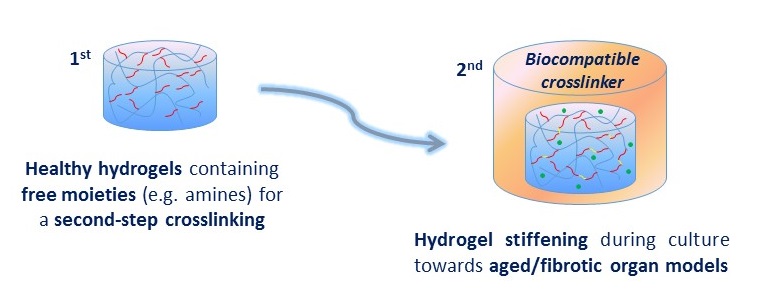Tissue-derived ECM gels as well as natural hydrogels (e.g. alginate, collagen and gelatin) are widely used as cell culture substrates in our researches. Collagen and gelatin are well-known biomaterials rich with adhesive ligands, while alginate is tipycally used as inert or sacrificial template to create complex structures with the nano-in-micro concept. Both gels and porous polymer scaffolds for 2D and 3D cell cultures can be fabricated from these materials using different cross-linking and freeze-drying schemes.

Figure: Rehydrated gelatin porous polymer networks obtained at different degree of chemical (i.e. glutaraldehyde) crosslinking (increasing from the left to the right).
Substrate structural and mechanical properties can be finely tuned by an appropriate selection of polymer and crosslinker type and concentration. Leveraging this concept we have recently developed a method to decouple the role of stiffness from other mineral-related signals of composite scaffolds in modulating progenitor cell differentiations.

In addition to traditional crosslinking agents, such as glutaraldehyde, we also use bio-compatible crosslinkers, such as enzymes and photo-activated riboflavin, to obtain stable gels in presence of cells or alter their mechanical properties during culture. The latter aspect is of particular relevance to develop pathophysiological in-vitro models able to replicate the tissue hardening typical of ageing and disease (e.g. fibrotic) processes in-vivo via a second-step biocompatible hydrogel crosslinking during culture.

Contact info:
Related publications:

